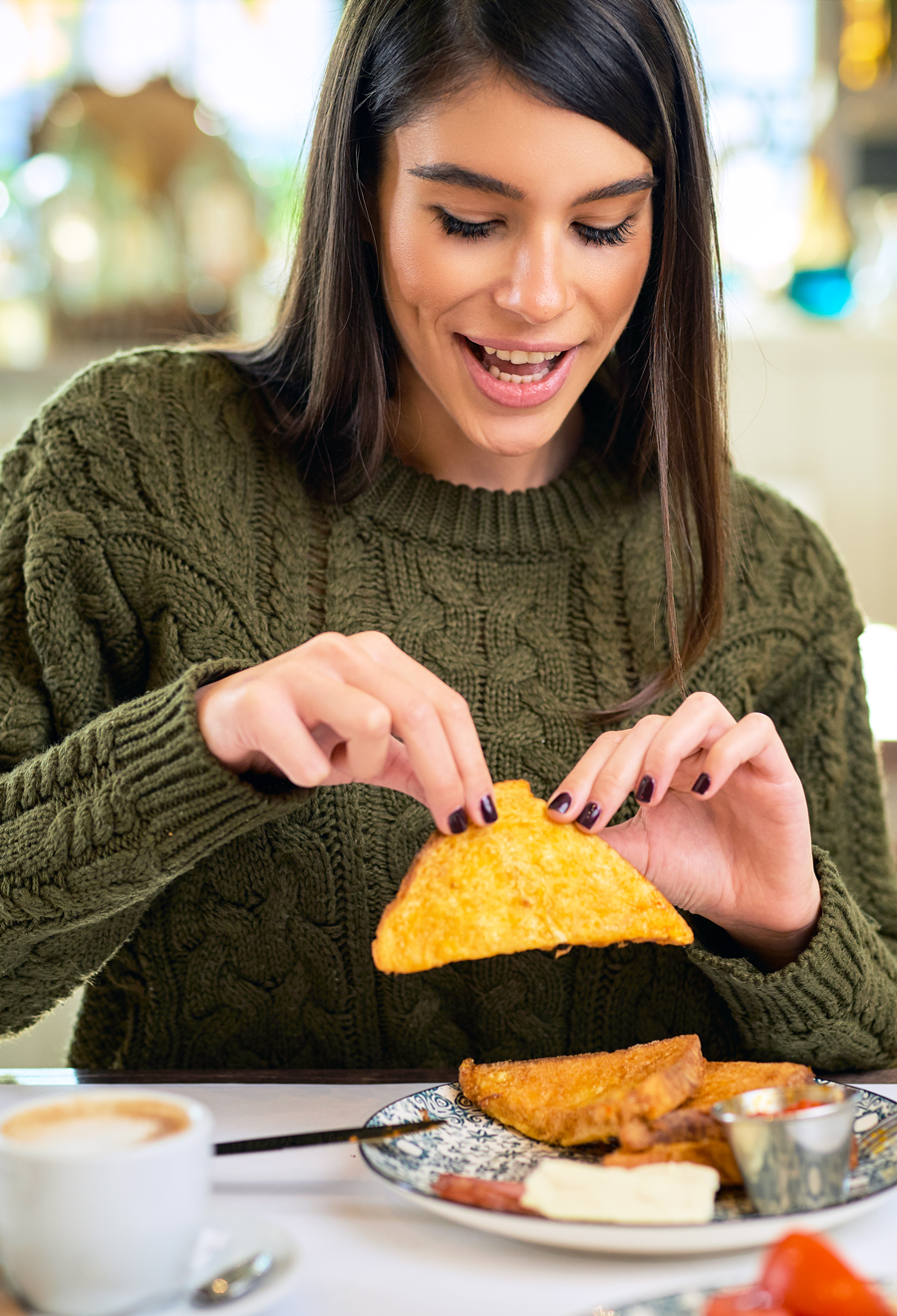Have you ever sat down in a restaurant abroad and been confused by what’s on the menu? Or puzzled that you can’t find French fries or Belgian waffles, despite being in the supposed homeland of the dish? American names for foods can sometimes be very different from what they’re called in other countries, so to help you, we’ve compiled a list of 15 tasty dishes, snacks, ingredients, and condiments that often get lost in translation.
Biscuit
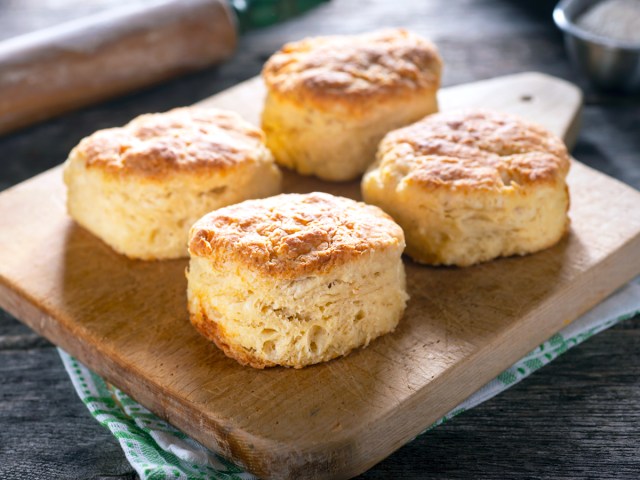
These flaky balls of dough are delicious with butter or jam at breakfast, and are also a classic southern comfort food served with gravy. But if you ask a Brit for a biscuit, they’ll serve you something completely different — a sweet, crumbly treat closer to what Americans consider a cookie. American biscuits derived from the floury biscuits carried on early voyages across the Atlantic by British sailors. The term itself comes from the Latin stems “bis” (twice) and “coctus” (cooked) because the treats were cooked multiple times so that they would harden.
The name “biscuit” would later encompass hard-baked, sweet treats from Europe, such as Italian biscotti. However, Americans began calling their sweet treats “cookies,” derived from the Dutch word koek, meaning “little cake,” with the word “biscuit” reserved for the flaky, doughy creations we’re familiar with today. If you want an American-style biscuit in the U.K., the closest thing you’ll find is a scone (but be careful how you pronounce it). Or you could ask for a biscuit, and watch as the British argue which one is best dunked into a cup of hot tea.
Greek Salad
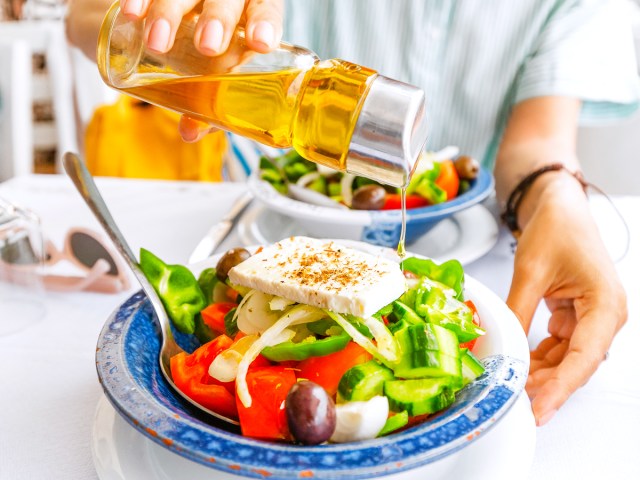
The best accompaniment to a gyro, Greek salad seamlessly blends feta cheese and olives with sweet tomato and red onion. But in Greece, this style of salad isn’t known as a “Greek salad” — it’s called a “horiatiki salata,” which translates to “village salad.”
Greeks believe that the best food is found in the country’s rural villages — straight from the family kitchen. Like most recipes in Greece, only a few simple, fresh ingredients are needed to create this delicious meal. Your horiatiki salata will come with a block of feta served on top, and a hearty glug of olive oil. With your fork, you simply break the feta off piece by piece and devour it with whatever else you can pick up. As they say in Greece, “Kali Orexi!” (Bon appétit!)
Pineapple
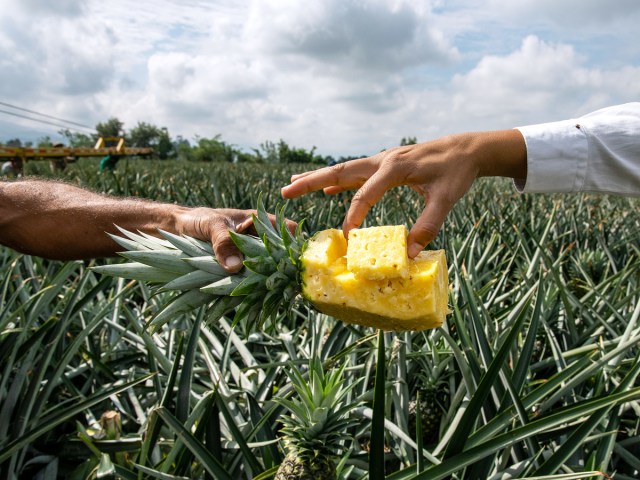
In English, the tangy, tropical fruit gets the name “pineapple” from its appearance. In most countries around the world, however, this yellow fruit is called “ananas.” Early botanists called most unfamiliar fruits an “apple”; for instance, peaches were originally known as “Persian apples.” When English explorer Captain John Smith first wrote of the pineapple in the 1600s, he chose the name because it looked like a pinecone.
The Spanish had encountered pineapples two centuries earlier and thought the same thing. Christopher Columbus called it “piña de Indes” (pine of the Indies), but the name didn’t catch on outside of Spain. When European countries began importing pineapples, most nations (except for Great Britain and Spain) simply referred to the pineapple by its native Tupi name, ananas.
Zucchini
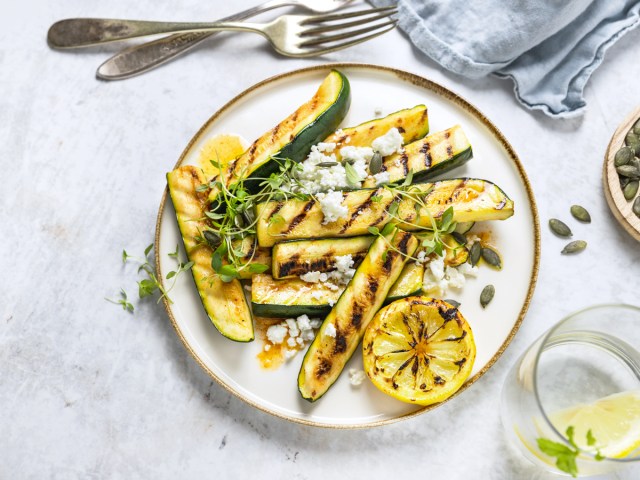
Healthy, versatile, and delicious when grilled, the zucchini is a miniature squash that grows in summer. In the United Kingdom and France, however, this popular garden vegetable is known as a “courgette.” Both names mean “little squash,” but the American word derives from the Italian name “zucchina,” while the British borrowed the name “courgette” from France.
The difference reflects the fascinating histories of both nations. In the United States, waves of 19th and 20th-century Italian immigrants brought their love for the vegetable with them, and their word “zucchini” was easy enough for anybody to say. Brits didn’t widely discover the delight of the squash until the 1930s, and simply used the name their French neighbors had.
Dessert
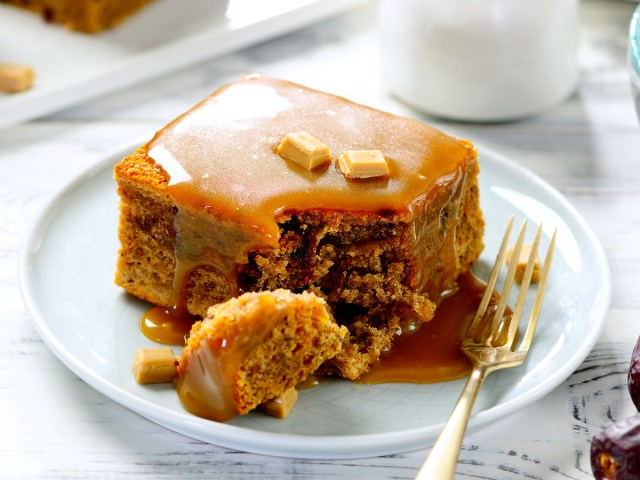
Seeing the dessert menu is probably everyone’s favorite part of a meal. In the United Kingdom, be prepared to see this course called “pudding.” Although a pudding can take on many specific forms, the term is used to lovingly refer to desserts as a whole.
Some say this is a result of the entrenched class system in Britain: The working classes tended to say “pudding,” whereas “desserts” were generally more refined, sophisticated dishes. Yet confusingly, puddings can also be savory. The Middle English word “poding” was a meat-filled animal stomach, but the term now encompasses both sweet and savory food, from Yorkshire pudding with animal fat and eggs to sticky toffee pudding.
Ketchup
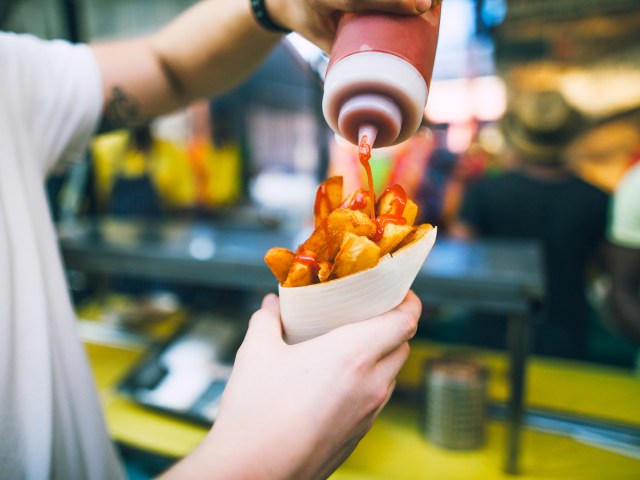
Put it on your fries, slather it on your hamburger, or even — if you really want to — swirl it into yogurt. It’s the most popular condiment around, but did you know that in Australia, ketchup is simply called tomato sauce?
This is because the Land Down Under had its own brands selling a tomato, sugar, and vinegar-based condiment — they just called it tomato sauce instead of ketchup. Heinz has attempted to market ketchup in Australia as distinct from tomato sauce, but ketchup connoisseurs have failed to find a huge difference in the two, apart from the fact that ketchup has slightly more tomatoes.
Bell Pepper
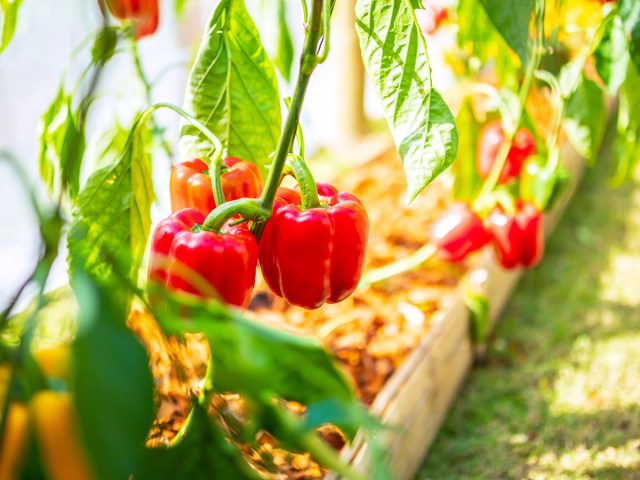
Speaking of Australia and New Zealand, bell peppers are called by their Latin genus name, capsicum, in the lands Down Under. This is also the case in countries in Asia where English is widespread, such as Singapore, India, and Pakistan. “Capsicum” is the Latin name for the plant that grows bell peppers, as well as chilies and pepperoncini. The plant is native to the Americas, but European colonists mistook it for black pepper because the fruit was spicy. Despite the blunder, the name stuck. Interestingly, the bell pepper is the only member of the capsicum family that doesn’t contain capsaicin, the hot chemical compound found in chili peppers.
Peanut Butter
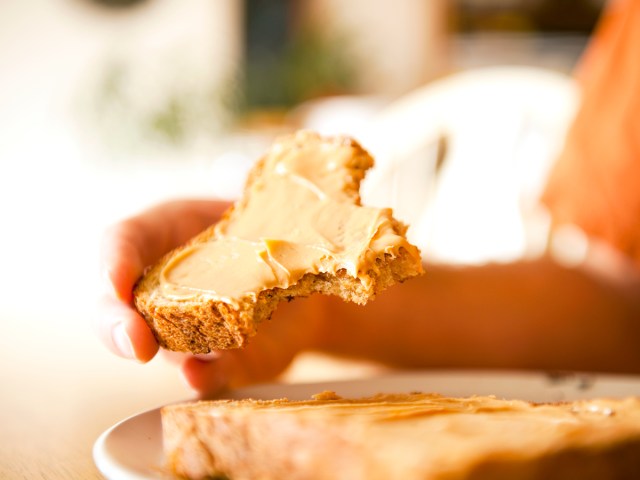
This popular nutty spread is known around the world as peanut butter, but in the Netherlands, it’s called “pindakaas,” which means “peanut cheese.” Peanut butter is an American innovation and didn’t make its way over to the Netherlands until 1948, when the country’s top condiment brand started producing it. However, the Dutch are diligent about their dairy, so the word “butter” could only be used for actual butter made from milk. To get around this, peanut butter became known as “peanut cheese.” No matter what it’s called, the Dutch can’t get enough of it, and the country is one of the biggest consumers of peanut butter in the world.
Baked Potato
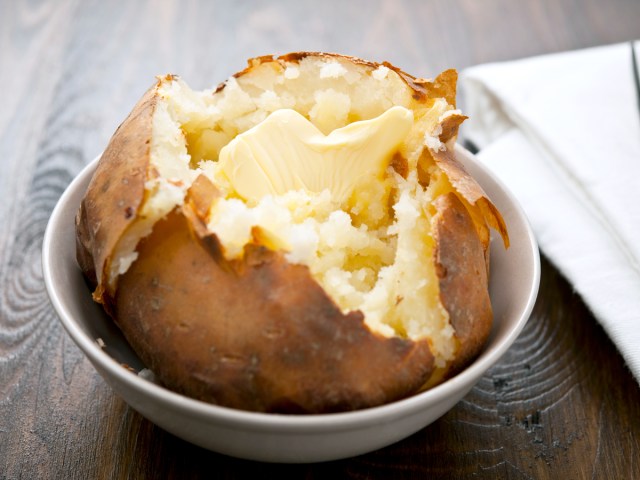
As far as food names go, the humble baked potato is one of the most literal. However, the British call the baked potato something else entirely: a “jacket potato.” When you think about it, this adorable name makes total sense. The soft flesh of the baked potato is protected by a thick, crinkly skin that can be easily taken off — just like a jacket. These potatoes are just like American baked potatoes, except in the U.K. they are cooked longer on low heat in the oven.
Hamburger
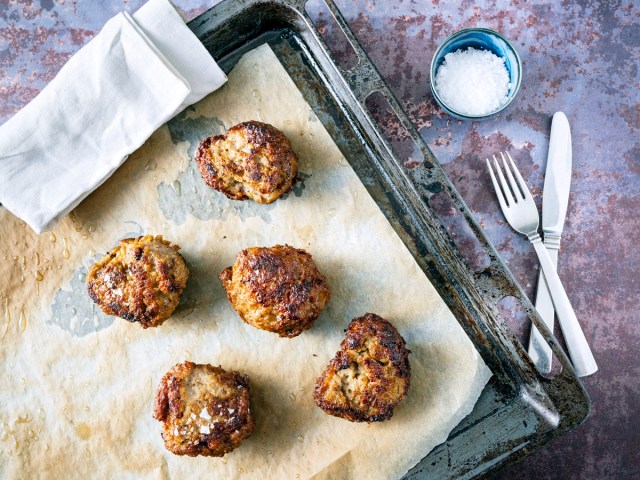
It’s believed these beefy meat patties came to the U.S. in the 19th century from Hamburg, Germany. Go to Hamburg today, and you’ll find American-style hamburgers sold by burger chains, but you’re better off trying a more traditional beef patty called the frikadelle.
The predecessor to the modern hamburger, the frikadelle has been eaten in northern Germany for centuries. The recipe hasn’t changed since it was devised hundreds of years ago. Like hamburgers, it’s made from ground beef, egg, and herbs. Frikadellen are usually served hot or cold with potato salad and lettuce. It’s one of the most popular German fast foods, and you can even find the patties served in a more familiar way — squished into a doughy bun and slathered with ketchup.
Danish

Denmark’s most famous culinary export is not originally from Denmark. Danes know the iconic Danish pastry instead as Viennese bread. The story starts in the 19th century, when Danish bakers went on strike, so their unscrupulous employers hired cheaper bakers from Vienna instead. However, the Austrian bakers weren’t trained in the art of Danish delicacies, so they made sweet treats from home, including a folded pastry packed with filling such as fruits, cream, jam, or chocolate. The pastry was a hit with Danish customers, so when the strike ended, the Danish bakers kept selling them. They added more fat and eggs, to appeal to the Danes’ appetite for rich food, but the recipe has largely remained true to the Austrian original.
French Toast

Just like French fries, French toast is not actually called “French toast” in France. Rather, the breakfast staple is known as “pain perdu,” which translates to “lost bread.” The name originates from a time when food was scarce and wasting food was not a luxury anyone could afford. The solution was to use up all the bread from the previous day that had gone stale. Instead of eating hardened bread, French people would dip slices into a mixture of eggs and milk and fry them in a pan. Rejuvenating the leftovers, the new dish would make for a tasty and nourishing meal that could feed a household. Nowadays, of course, French toast is a mainstay on brunch menus around the world.
Eggplant

When browsing the supermarket in the U.S., seeing an eggplant with its purple skin is customary. However, have you ever stopped to wonder why its name pays homage to eggs? Well, in the late 16th century English botanist and herbalist John Gerard likened the vegetable, which is native to the Indian subcontinent, to a swan’s egg, giving rise to the term “eggplant.” The U.K., however, opted to borrow the name “aubergine” from the French instead. The word’s origin comes from the Catalan word “alberginia,” which came from the Arabic “al-badhinjan” and the Persian word “badingan” before that.
Arugula

How does one equate “arugula” to “rocket” of all words? Look to their shared root — and not the literal one. Both words have a common ancestor, the Latin word “eruca,” referring to a native Mediterranean plant species. Arugula was first known as “ruchetta” in Italian and later “roquette” when the vegetable arrived in France in the 16th century. On its way to the U.K., the “qu” was dropped, and the more English-sounding “ck” was adopted instead.
However, the U.S. went the Italian route, a result of the influx of immigrants to the country in the 19th and 20th centuries. “Arugula” combines “rucola” (the modern Italian word for the vegetable) and “arucula,” the name used by most southern Italians when they came to America.
Jelly Doughnut

One speech by former president John F. Kennedy in 1963 has gone down in history for all the wrong reasons. It famously included the line “Ich bin ein Berliner,” which actually means “I am a jelly doughnut.” In parts of Germany, a “Berliner” is not a term for a citizen of the city Berlin, but rather a jelly doughnut. Historians believe that Germany was the first to introduce the beloved treat in the 1700s.
Although Berlin residents call the jelly doughnuts “pfannkuchen” to avoid confusion, the popular, jelly-filled treats are often called Berliners across Europe. In Lisbon, Portugal, they’re called “bola de Berlim” (Berlin ball), but in Helsinki, Finland, you’re more likely to find a “berliininmunkki” (Berlin doughnut).
More from our network
Daily Passport is part of Inbox Studio, which publishes content that uplifts, informs, and inspires.






